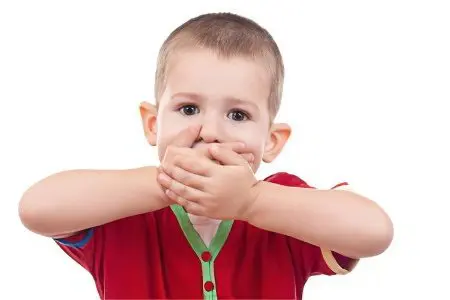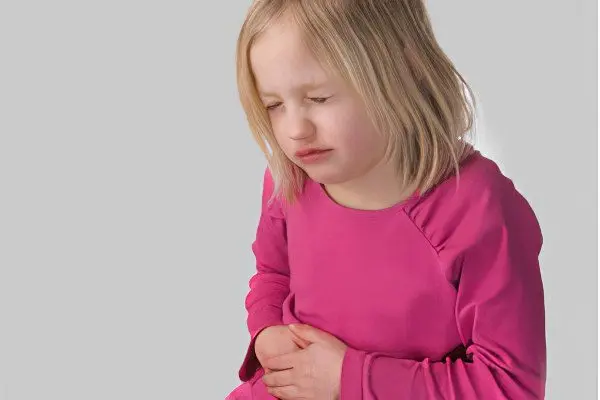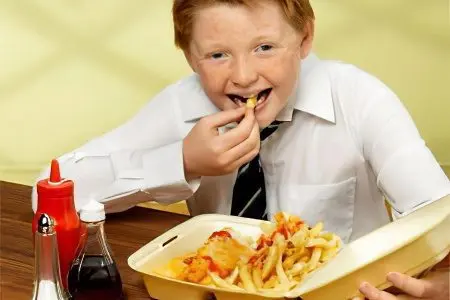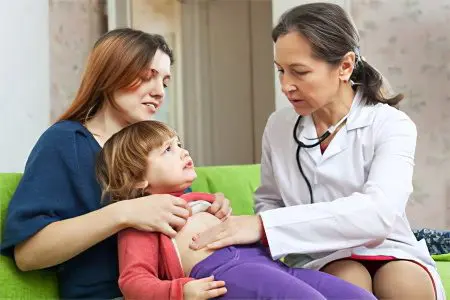Contents
Gastroduodenitis – inflammation of the mucous membrane of the stomach and duodenum 12. This disease is manifested in children by a violation of the stool and appetite, nausea and heartburn, bloating and pain in the projection of the stomach after eating. Treatment of gastroduodenitis in children includes taking drugs from the groups of antacids, gastroprotectors, antisecretory agents, adsorbents, as well as diet and physiotherapy.
Features of gastroduodenitis in children

This pathology ranks first in frequency of occurrence among all diseases of the gastrointestinal tract in children – approximately 65-70%. Thus, it is safe to say that every third child is ill with gastroduodenitis in one form or another, children of all ages are subject to it, except for the earliest (newborn).
Children’s gastroduodenitis leads to:
To change the mechanism of secretion of gastric juice;
To a violation of the promotion of the food bolus;
To the deterioration of the motility of the stomach and intestines;
To the restructuring of the structure of the mucous membrane of the stomach and duodenum.
Unfortunately, the trend towards an increase in the number of sick children over the past 10-15 years has only increased.
Children have age-related features of the digestive system that directly affect the high likelihood of developing disorders in the gastrointestinal tract:
The secretory glands of the child’s stomach are still defective, they cannot maintain the balance of acidity;
Enzymes of gastric juice are not active enough, they can digest food that is appropriate for age, but with deviations from the diet, they do not cope with their task;
The child’s intestines have a reduced bactericidal activity, so children often have intestinal infections;
Children have sensitive intestines – the balance of digestion and absorption, the transport of water and electrolytes is easily disturbed, which leads to rapid dehydration and intoxication.
The disease can take an acute and chronic form, passing through phases of remission and exacerbations. Gastroduodenitis in children has the same forms as in adults: it can be erosive, superficial, hemorrhagic, atrophic, hypertrophic or mixed.
Symptoms of gastroduodenitis in children

The most striking symptom of gastroduodenitis in children is aching pain in the epigastric region. Pain occurs after eating (after 1-2 hours), at night, on an empty stomach, disappears after taking antacids, after eating. It gives to the navel, under the ribs, can be sharp or cramping.
Additionally, the child feels the following symptoms:
Heaviness in the stomach, distension;
Sour or bitter belching;
Alternating constipation and diarrhea;
Excessive salivation;
Nausea and vomiting;
Lack of appetite;
Weakness, insomnia, increased fatigue.
The child may experience vegetative crises, manifested by drowsiness, palpitations, sudden weakness. If there are long breaks between meals, hypoglycemia attacks are possible. They are manifested by trembling all over the body, weakness, “wolfish appetite.”
Relapses and exacerbations are most often observed in the off-season (spring and autumn), after stress, past illnesses, and training loads.
Causes of gastroduodenitis in children

Most often, gastroduodenitis in children occurs due to infection of the digestive tract with the bacterium Helicobacter pylori, against the background of gastritis caused by this pathogen.
Secondary endogenous and exogenous factors in the development of pathology:
Genetic predisposition;
Reduced immunity due to past somatic and infectious diseases;
Pathologies of pregnancy and childbirth in the mother of a sick child;
Early transfer to artificial feeding;
food allergy, allergic dermatitis;
History of gastrointestinal pathology (cholecystitis, pancreatitis, hepatitis, enterocolitis);
The presence of endocrine diseases (diabetes mellitus, pathology of the adrenal glands);
The presence of foci of infection (tonsillitis, caries);
Parasitic invasions (helminthiasis, amoebiasis);
Diet disorders – eating dry food, monotonous nutrition, rare meals, eating irritating foods;
Poisoning with food toxins;
Side effects of drugs – NSAIDs, antibiotics, glucocorticosteroids.
Since there are many schoolchildren among children with gastroduodenitis, the probable cause of the disease is the study load and the associated stress, mental overload.
Diagnostics

If there is a suspicion of a digestive disorder in a child, you should contact a pediatrician, then a gastroenterologist.
During a visual examination, the doctor will reveal the following signs of the disease:
Pale, sagging skin;
Reduced body weight;
“Bruises” under the eyes;
Brittle nails, hair loss;
Yellowish coating on tongue, imprints of teeth on it.
The main method for detecting pathology is fibrogastroduodenoscopy, or FGDS. This endoscopic examination will help the doctor determine the form and stage of the disease. During the procedure, the specialist takes a sample of the gastric mucosa for histological and morphological analysis.
Additional diagnostic methods:
Blood test to detect anemia;
Analysis of feces for helminthiasis and giardiasis;
Coprogram for the detection of dysbacteriosis;
ELISA analysis of feces, breath test, PCR diagnostics for the determination of the bacterium Helicobacter pylori;
Intragastric pH-metry to study the acidity of gastric juice;
duodenal sounding;
Ultrasound and x-ray of the stomach to assess its motility and evacuation function.
In addition to consulting a specialized doctor, the child can be referred to an allergist and other specialists.
Treatment of gastroduodenitis in children

Dietary nutrition against the background of physical and mental rest is the most important part of the treatment of gastroduodenitis in childhood.
The basic principles of the diet:
Frequent fractional meals (5-6 times a day);
Method of cooking – boiling, baking, steaming;
Refusal of strong meat broths, mushrooms, fatty meat and fish;
The ban on the use of smoked meats, canned food.
With exacerbations of the disease, treatment is carried out in bed rest. When a Helicobacter pylori bacterium is detected in the gastrointestinal tract of a child, a combination of two antibiotics (Metronidazole and Ampicillin) with bismuth preparations is prescribed.
Groups of drugs used in the treatment of gastroduodenitis in children:
Antacids – to regulate acidity;
Antisecretory agents – Omeprazole, Ranitidine;
Antireflux agents – prevent the backflow of gastric juice from the duodenum 12 into the stomach (Domperidone, Metoclopramide);
Gastroprotectors to protect the walls of the stomach and intestines (Sucralfate, folic acid, bismuth subcitrate);
Adsorbents – bind toxic substances and gases (Smecta, methylsilicic acid hydrogel);
Vitamins.
Additional methods – the use of mineral waters, herbal medicine, spa treatment.
Physiotherapeutic procedures for gastroduodenitis in children:
UHF;
electrophoresis;
laser treatment;
Diadynamometry;
Inductothermy;
Hydrotherapy.
As new dishes are included in the diet, the child may be prescribed digestive enzymes (Festal, Creon), probiotics and lactobacilli to restore the microflora of the gastrointestinal tract.
Prevention and prognosis of the disease

So that the child does not suffer from inflammatory diseases of the gastrointestinal tract, he should be offered nutrition appropriate for his age, timely treat foci of infection in the child’s body. Of great importance for the prevention of gastroduodenitis in children is the optimal mode of alternating work and rest, protection from stress, teaching the child methods of psychological protection.
Children with gastroduodenitis are registered with a pediatric gastroenterologist. Every year they undergo ultrasound of the abdominal organs and FEGDS.
According to the results of the studies, the doctor adjusts the course of treatment. The chronic course of the disease in children is manifested by frequent relapses, it is very difficult to achieve tangible progress. Chronic gastroduodenitis in a child is a prerequisite for the development of a similar disruption of the gastrointestinal tract in adulthood.









